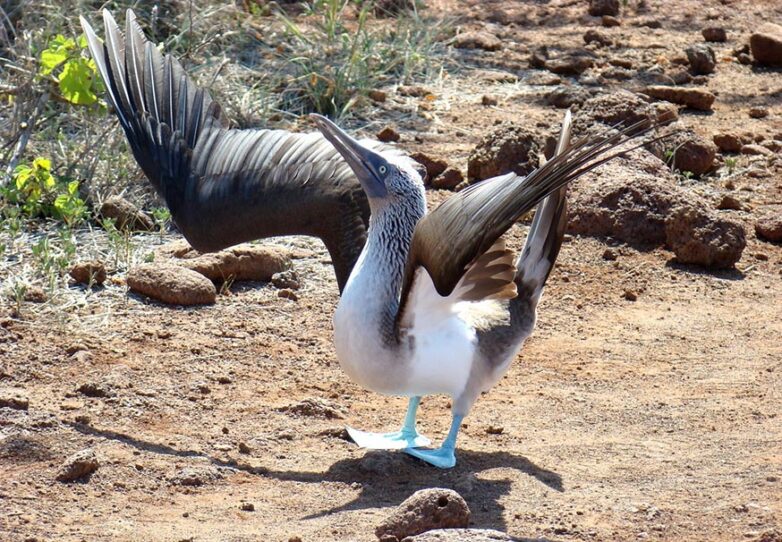
The Galapagos Islands or archipelago, is a group of Islands in the Pacific Ocean which is best known for the diverse animals and plants species. Many of the animals and plants species are endemic, which means only here those species are sighted in the world.
The Galapagos archipelago is volcanic islands in the Eastern Pacific Ocean, situated around 966 km away from the Ecuadorian coast. Those Islands form the Galapagos Province of Ecuador with 33k population.
There are nineteen major and a few small islands which make up the Galapagos archipelago. The largest island of this archipelago is Isabela with 129 km long. Due to the frequently volcanic eruptions, the landscape of the Galapagos Islands is rugged.
Noteworthy Species of Galapagos Islands:
The Archipelago is best known across the globe because of the diverse array of animal and plant species. Many species are native or endemic, which means they are not sighted anywhere else in the world. These include both marine and land iguana, giant tortoise (it gave the name of the islands), green turtle, flightless cormorant, great frigatebird, see cucumbers, Galapagos racer (It is endemic species of snake with two subspecies), flycatcher, dove, blue footed booby, Galapagos tropical penguin, waved albatross, hawk, Galapagos sea lions and so on.
There are around 500 native and endemic plant species have been introduced in the archipelago. Due to dwelling of human, some non-native plant and animal species introduced today like avocado, guava, cascarilla, balsa, goats, dogs, cats, pigs, rats and mice, donkeys, sheep, cows, horses, poultry, ants cockroaches inhabit today.
Galapagos Climate:
Set 966 km off the coast of Ecuador and largely influenced by ocean currents, the Galapagos archipelago has a tropical and semi-arid climate. Having seasonal variations throughout the year, temperatures do not vary greatly here. It has a tropical climate with average temperature 29°C and water temperature 25.5°C on average with little rainfall and seasonal breezes and fog.
Approximately, the time periods between December to June is known as the warm and wet season in this archipelago. During the period, the climate is more tropical in this Islands with daily cloudier skies and rainfall. The northern Panama ocean current heats the water temperatures and that is why archipelago experiences periodic rains that often clear up by the evening. Due to ocean conditions are very calmer during this wet season, the underwater visibility is very excellent and with a warmer temperature, snorkeling and swimming can be more comfort and enjoyable.
Galapagos dry or cool season starts approximately from July to December. During the time period the southern trade winds bring the cold Humboldt current to Galapagos Islands. And with it, cooler water temperatures, cooler days and blue skies also appear. Garua, a misty fog, covers highlands of larger islands.
Integrity:
The Galapagos archipelago is situated about 966 km from continental Ecuador and integrated of 127 islands, rocks and islets, of those 19 are large islands and 4 are inhabited. 97 percent of the total emerged surface (7,665,100 ha) of the archipelago was declared as National Park in 1959. And remaining 3 percent area are restricted for the human settlement in selected zone urban and rural area on four islands. Also, a fifth island has only an airport, fuel containment, tourism dock and military facilities. The archipelago is one of the largest marine reserves in the world. The marine reserve was created in 1986 with the area of (70,000 km²) and extended to its current area (133,000 km²) in 1998. Airports on two islands, Baltar and San Cristobal receive traffic from continental Ecuador. For the merchandise, all the inhabited islands have ports and other uninhabited islands are strictly controlled with proper planned for tourism visitation. And around 170000 tourists visit the archipelago each year.
Conservation and Management Requirements:
The main concern to the Galapagos is the introduction of invasive species, demographic growth, increased tourism, illegal fishing and governance issues. These issues are constantly analyzed and monitored to adequately manage them and reinforce strategies to minimize their impact.
To control fishing and over-exploitation of Galapagos marine resources, a law was passed in 1986. To strengthen the protection of archipelago Marine Resources, Special Regime Law for the Conservation and Sustainable Development in the Province of the Galapagos was introduced in 1998 and written in constitution of the Republic of Ecuador. This law empowered the authorities of Galapagos National Park Service to protect this Marine Reserve. This law also provides others specific legal framework over which many aspects of marine and island life are to be regulated, including inspection and quarantine measures; provincial planning; residency and migration of people to the islands; permits and quotas; control and marine monitoring; fisheries management; tourism through a visitor management system, agriculture; waste management; and “total control” of introduced species. The settlers in this area have to follow the strict rules imposed by management but also provides them with preferential rights to the natural resources sustainably.
Since 1974 to date, Galapagos National Park Service periodically prepare management plans which have been developed in a participatory manner among the different economic and social groups through community representatives and also local authorities to specifies the changing realities of Galapagos ecosystem.
Read more:
